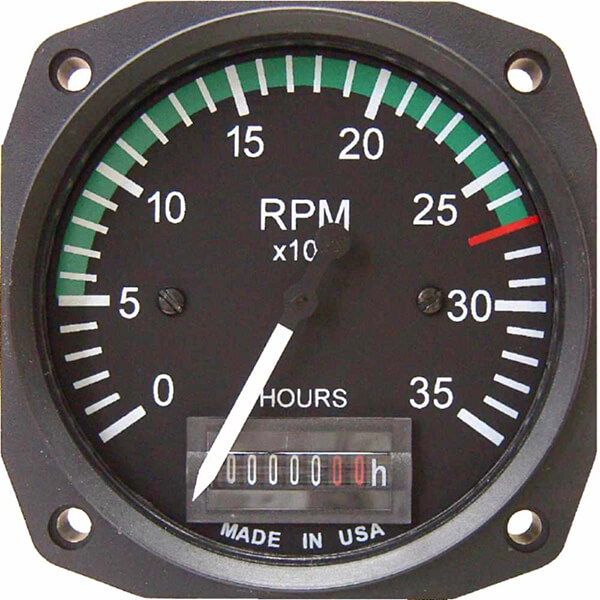Tachometer Basics: Every Little Thing You Need to Know for Accurate Readings
Tachometer Basics: Every Little Thing You Need to Know for Accurate Readings
Blog Article
Opening the Tricks of Tachometers: Whatever You Need to Understand About This Important Tool in Your Automobile
Comprehending the intricacies of tachometers can supply important understandings right into your vehicle's efficiency and upkeep needs. From gauging engine speed to analyzing the information it provides, tachometers work as an essential tool for car owners and enthusiasts alike. By untangling the mysteries behind this necessary tool, you can open a wealth of information that can improve your driving experience and ensure the durability of your car.
Significance of Tachometers
The significance of tachometers hinges on their capacity to give important real-time data concerning an engine's rotational rate, enabling accurate monitoring and maintenance of equipment. By gauging the transformations per minute (RPM) of an engine's crankshaft, tachometers provide valuable insights into the engine's performance - tachometer. This information is vital for guaranteeing that the engine runs within its optimum array, staying clear of possible damage from over-revving or underperforming
Tachometers play an essential function in assisting operators and technicians discover any kind of anomalies in the engine's speed, which can indicate problems such as gas inefficiency, mechanical problems, or extreme pressure on the engine. By without delay determining these issues with tachometer readings, maintenance can be executed proactively, protecting against expensive repairs and downtime over time.
Additionally, tachometers are particularly important in high-performance vehicles and equipment, where exact control over engine speed is needed for optimal procedure. Competing autos, aircraft, and industrial equipment count on tachometers to provide peak efficiency while preserving security criteria. Essentially, tachometers are not simply tools for gauging rate but important devices for making certain the smooth and reliable operation of engines throughout different applications.
How Tachometers Action Engine Speed
Making use of sensors that discover the regularity of electric pulses generated by the engine's ignition system, tachometers accurately gauge the rotational rate of an engine. By keeping track of the price at which these pulses are obtained, tachometers give real-time comments on exactly how fast the engine's crankshaft is rotating per minute, frequently referred to as revolutions per minute (RPM)
The tachometer's sensor, often connected to the engine's ignition coil or ignition system cables, picks up the electrical signals produced each time a cyndrical tube fires. These signals are after that exchanged RPM analyses showed on the gauge or instrument cluster within the motorist's sight. Tachometers can be analog or electronic, with modern-day automobiles frequently featuring digital screens for specific and instant RPM analyses.
This info is vital for vehicle drivers to recognize the engine's performance, prevent over-revving, enhance equipment shifting, and guarantee reliable gas consumption. By accurately gauging engine rate, tachometers play a vital function in assisting vehicle drivers operate their vehicles safely and efficiently.
Translating Tachometer Analyses
Having a clear understanding of exactly how tachometers gauge engine rate sets the foundation for efficiently analyzing the RPM analyses presented. Interpreting tachometer analyses is critical for ideal car efficiency and engine health and wellness. RPM (Revolutions Per Minute) analyses on the tachometer suggest the rate at which the engine's crankshaft is revolving. When the engine is idling, the tachometer needle typically relaxes around 600-1000 RPM, relying on the lorry. As you speed up, the RPM will certainly pop over here enhance, reflecting the engine's higher rotational rate. When changing equipments in a hand-operated transmission vehicle, the RPM will certainly go down as you involve the clutch and modification gears, then climb once again as you increase in the brand-new equipment. Keeping track of the tachometer can aid you determine the most effective moving indicate take full advantage of fuel economic situation and engine power. Additionally, unusual changes or regularly high RPM readings might suggest potential concerns with the engine that might require expert attention. By focusing on the tachometer readings and understanding how to translate them, you can guarantee your automobile runs efficiently and efficiently.


Tips for Using Tachometers Effectively
To boost driving effectiveness and optimize engine efficiency, what key strategies can be applied for efficiently making use of tachometers? Tachometers are crucial tools that give real-time comments on engine speed, enabling chauffeurs to make informed decisions for much better efficiency - tachometer. Right here are some pointers for making use of tachometers successfully:
Recognizing Optimum RPM Variety: Familiarize on your own with the optimum RPM (Changes Per Minute) array for your lorry. This range visit site varies between different vehicles and is typically shown in the proprietor's handbook. Keeping the engine within this range can improve gas effectiveness and lengthen the engine's lifespan.
Moving Gears at the Right Time: Utilize the tachometer to determine the finest time to shift gears. Purpose to shift equipments when the RPM reaches the optimum variety for the following equipment.
Keeping Track Of Engine Anxiety: High RPMs for prolonged durations can strain the engine. Maintain an eye on the tachometer to prevent over-revving, specifically during acceleration or when bring site web hefty lots.
Tachometers and Lorry Upkeep
When taking into consideration car maintenance, tachometers play an important function in monitoring engine performance and identifying possible concerns. Tachometers give essential data on engine rate, permitting drivers and mechanics to make certain that the engine is operating within the recommended RPM range. Consistently monitoring the tachometer analyses can help identify troubles such as engine misfires, worn-out ignition system, or concerns with the fuel distribution system. By taking note of the tachometer, motorists can prevent too much pressure on the engine, which can cause expensive repair services down the line.
Along with detecting possible issues, tachometers can likewise assist in enhancing fuel performance. By keeping the engine speed within the optimal range, motorists can enhance their gas mileage and decrease fuel consumption. This not only profits the vehicle driver's budget yet additionally contributes to ecological preservation by decreasing damaging emissions.
Verdict

Report this page